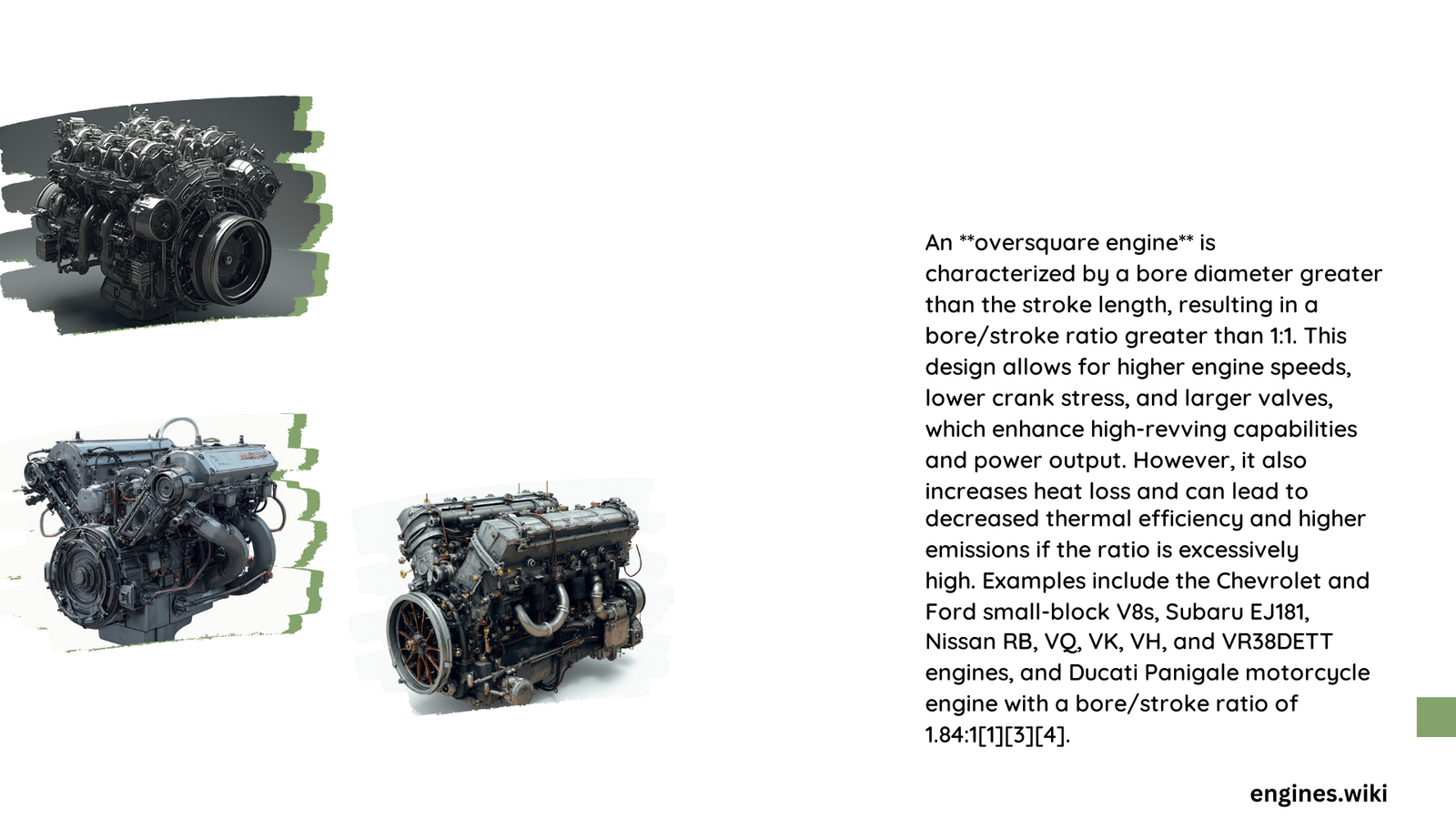An over square engine represents a sophisticated mechanical configuration where the cylinder bore diameter exceeds the piston stroke length, enabling remarkable performance characteristics. These precision-engineered powerplants deliver exceptional horsepower potential, reduced mechanical stress, and enhanced high-RPM capabilities across diverse automotive applications, from sports cars to racing vehicles.
What Makes an Over Square Engine Unique?
How Does Bore-to-Stroke Ratio Define Performance?
Over square engines are characterized by a distinctive bore-to-stroke ratio exceeding 1:1, meaning the cylinder bore diameter is larger than the piston’s stroke length. This fundamental design principle unlocks several critical performance advantages:
- Larger Valve Dimensions: Enables increased air intake and exhaust flow
- Reduced Piston Speed: Minimizes mechanical stress during high-RPM operations
- Compact Engine Architecture: Allows for lower vehicle profile and weight reduction
What Are the Core Mechanical Characteristics?
| Parameter | Typical Over Square Engine Specification |
|---|---|
| Bore-to-Stroke Ratio | > 1:1 |
| Typical Bore Size | 4.0 – 4.5 inches |
| Typical Stroke Length | 3.0 – 3.5 inches |
| Peak Power Range | 6,000 – 8,000 RPM |
Where Do Over Square Engines Excel?

Performance Domains
Over square engines demonstrate exceptional performance in:
- Sports Car Engineering
- High horsepower generation
- Rapid acceleration capabilities
-
Responsive throttle dynamics
-
Racing Applications
- Maximum power output
- Minimal mechanical resistance
-
Extreme RPM tolerance
-
Motorcycle Performance
- Quick acceleration
- Lightweight design
- Enhanced top-end power delivery
Technical Advantages
Reduced Mechanical Stress
The oversquare configuration inherently reduces mechanical stress through:
– Shorter piston travel
– Lower rotational inertia
– Minimized bearing load
– Enhanced thermal management
Thermal Efficiency Considerations
While not universally superior, over square engines can achieve improved efficiency through:
– Reduced frictional losses
– Optimized combustion chamber geometry
– Advanced material engineering
Challenges in Over Square Engine Design
What Limitations Exist?
Despite remarkable advantages, engineers must address:
- Higher manufacturing complexity
- Increased maintenance requirements
- Potential vibration management
- Precise component tolerances
Mitigation Strategies
- Advanced computational modeling
- High-strength lightweight materials
- Sophisticated vibration dampening systems
- Precision manufacturing techniques
Real-World Implementation Examples
Iconic Over Square Engines
- Honda NSX C30A Engine
- Pioneering oversquare design
-
High-performance sports car application
-
Formula 1 Racing Powerplants
- Extreme oversquare configurations
- Maximum power-to-weight ratio
Future Technological Trajectory
Emerging Trends
- Hybrid oversquare engine designs
- Advanced computational optimization
- Integration with electric propulsion systems
- Enhanced materials science
Conclusion
Over square engines represent a pinnacle of mechanical engineering, balancing performance, efficiency, and technological innovation across automotive domains.
